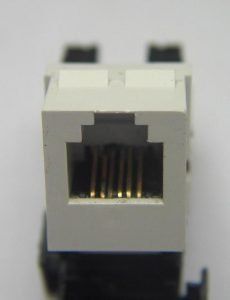Interesting Cases and Misidentified Insects in Hampton Roads
FREQUENTLY ASKED QUESTIONS ?
Three Difficult Systems
Some recent building construction has made it difficult to properly inspect and treat for termite and moisture conditions. The pest control industry is currently working with building code officials to make these designs more accessible. Currently, Ewell Pest Control treats each of these designs on a case-by-case basis to be sure your home can be properly protected. The image above shows what can happen hidden behind Dryvit if it is not properly maintained. Below, each design is discussed.
- 1. DRYVIT SYSTEMS
Dryvit systems were designed to make outside structural walls energy-efficient, as well as making it visually appealing at the same time. Unfortunately, it was discovered that if moisture got behind the system through cracks around windows, doors, and other openings in the system, as well as from damage to the outer shell, it would become encapsulated between the foam and insulation and actually decay the plywood sheathing and studs from the inside. This would not only allow for severe structural damage, but termites would find this moisture and actually live in colonies above the ground within this “perfect” environment. Not only was this damage hidden between the drywall and Dryvit system, but treatment was impossible without further damage to the system from the chemical and additional drilling to get the chemical to the termites.
After many years of litigation, the Dryvit system has been improved, but there are still limitations to inspections and treatments. The key to preventing moisture intrusion is to keep the entire system maintained by proper re-caulking with premium adhesive and promptly repairing damaged coatings. Preventing water leaks from above, within, and below, along with crawlspace ventilation, helps to control moisture and termite entry into Dryvit. We also use infrared cameras to better find moisture behind walls of these designs.
- 2. SPRAYED FROM SYSTEMS
Foam that is sprayed on wood for insulation is just as much of a problem as Dryvit systems if moisture were to enter through cracks in the foam. Inspections are also just as difficult. In addition, the foam is attached directly to the wood, masonry, wiring, and other attachments and allows termites and moisture to stay hidden unless the foam is removed. The weakness of damaged wood is masked because the foam can help support loads that the wood itself should be supporting. Termites can actually tunnel easily through the tiny voids of foam and be protected from moisture loss and temperature changes, eating wood throughout the colder winter and drier summers.
- 3. CRAWLSPACE ENCAPSULATION SYSTEM
Despite their name, these systems rarely encapsulate or completely surround the entire crawlspace. However, just as with Dryvit and spray foam, they do cover critical areas where termites can enter. Also, the foam and/or vinyl cover is impermeable to moisture, so if water gets behind or under this cover, it will not dry out sufficiently. As an example, if you ever had an aboveground pool or laid a tarp on the ground for an extended period of time, when it came time to remove these, it would always be wet where they set on the ground. The moisture gets trapped under the vinyl and has nowhere to go except on the substrate behind it. Masonry will wick up any water below it, adding additional moisture behind the vinyl. You can bet termites will find this moisture and get into the wooden understructure above!
Each of these 3 designs offer unique opportunities for termites to find moisture and enter homes from the crawlspace undetected. Treating for these invaders using conventional industry practices could damage these designs in certain situations. Ewell Pest Control’s certified entomologist has prescribed various treating techniques to give you, the customer, our best effort to protect the home from termites while avoiding damage to these systems. This treatment, as well as limited inspections, means the customer must understand that there can still be unique termite and moisture conditions not covered under the usual termite warranties.
Although most termite companies “walk away” from these cases, Ewell Pest Control meets these challenges, as well as any future designs, so that no home in Hampton Roads stays vulnerable to termite attack. With the homeowner’s cooperation to maintain these designs and to quickly repair any moisture leaks, it is still possible to provide adequate protection.
Termite Liquid Barrier Treatments vs. Baiting Systems
Liquid Termiticides Available
(We use those products listed in bold.)
Non-Repellants
- Termidor – Fipronil
- Premise – Imidacloprid
- Transport – Acetamiprid – Bifenthrin
Repellants
- Talstar/Biflex – Bifenthrin
Comparisons
Baits vs. Liquids
- Bait systems are more costly than barrier systems.
- Baits take longer for initial control, feeding and molting up to 1 year or more.
- Baits have more gaps due to termites’ random feeding pattern.
- Baits fail when termites stop their random feeding, due to weather.
- Baits are very time consuming for placement and monitoring.
- Baits cannot be located underneath slabs.
- Baits have smaller environmental footprints and are more target specific.
- Baits require no concrete drilling, and there is no cement dust mess.
Sentricon vs. First Line
- Sentricon is more costly to monitor, is non-flexible, and more intrusive.
- Sentricon controls slower, but there is no bait shyness for colony elimination.
- First Line kills all termite forms quickly.
Bottom Line on Baits
- It is still too early for conclusive data on efficacy and longevity (total effectiveness).
- Baits are appropriate only when included in a total control program, using both liquids and other formulations as needed.
- Baits are useful alone if barriers fail, due to construction issues or if there are currently no active termites and a quick control is not needed.
Weird Pest Cases
Pool pump motors and heat pump circuit boards have been ruined by ants. Squirrels have chewed through wires and shut down phone and electric service for several square miles. Spiders have set off smoke alarms and cockroaches have turned on/off thermostats by nesting in the coil. Here are a couple of our own cases that we handled just recently.
Ant Sabotage!
Ewell Pest Control was called to a residence in Virginia Beach, VA after a Verizon phone repairman reported ants had damaged a phone jack.
The customer had reported to the phone company static on her phone line and, after one incoming ring, the phone would go dead. After troubleshooting the lines, the repairman found this jack (Top Left) to show some corrosion. Only after removing it from the wall did he find the cause (Bottom Left).
Our entomologist figured the ant was in search of food/moisture and when it walked across the conductors, the low voltage was enough to kill it. Formic acid, found in most ants, seeped from the ant and corroded the conductors. This caused the phone to short out!
Odorous house ants are an increasing problem in southeastern Virginia, finding nest sites in wall cavities and insulation.

Slide title
Write your caption hereButton
Cockroach MisID
Cockroach or Waterbug?
Depending on what area of the country you are from, the same cockroaches are known by many different names. This is one reason why entomologists call them by their Latin name: to avoid confusion. For example, in the eastern part of the country, larger cockroaches may be called roaches in New England, waterbugs in the Mid-Atlantic or South Atlantic, and palmetto bugs in the Deep South. All these names can be linked to the American Cockroach, Periplaneta americana!
Cockroach Invades Area. Now They Are Here To Stay.
In 1988, Ewell Pest Control’s newly hired entomologist discovered a cockroach he hadn’t seen before in the Shadowlawn area of Virginia Beach. After taking the specimen back to the office, he identified it as a Smokey Brown Cockroach, a close cousin to the American Cockroach, but not normally found in this area. After a few years, he found more smokey browns in apartment and naval housing units further inland. He concluded that the smokey browns had hitched rides from further south and decided the very warm summers and mild winters were to their liking. They only have to seek a warmer area in or under our house to survive.
These roaches normally live outside, so they invade when the weather changes. So once these roaches are eliminated, more could invade later on. It’s important to prevent these roaches from entering your home by sealing openings and keeping up proper pest control around the foundation.
Unfortunately, there are many area pest control people still misidentifying these recent invaders. They have now become well established in our area and only the well informed, professional pest control operators know how to identify these bugs. Our entomologist has posted the 3 similar roaches and a summary of their differences in the enlarged images.
Remember, it is necessary to correctly identify the pest before you can control it. Call Ewell Pest Control for proper identification and treatment.
Periplaneta fuliginosa – Smokey Brown Cockroach
Characteristics
Size: As large as 1 ½ inches in length
Color: Dark mahogany brown
Behavior
This cockroach is a ready flier and easily travels from trees onto houses. It is commonly attracted to homes to feed on improperly maintained trash containers and pet food on patios and decks. Once by the house, the insect may then enter.
Habitat
The smokey brown cockroach usually invades the attic or crawl space where it finds conditions similar to those found within a tree hole. Once populations grow large inside these areas, the cockroaches regularly venture down into the home. The occasional cockroach may wander into a home from harborage outside, but chronic infestations are most always associated with attic or crawl space populations. Research has shown that attics and crawl spaces that have good ventilation are less likely to have these cockroaches living within them. The smokey brown is a common pest of homes along the Gulf Coast from central Florida to eastern Texas. It is also found in a few areas of Southern California, especially in the Los Angeles area.
Blatta orientalis – Oriental Cockroach
Characteristics
Size: About ½ inch in length
Color: The female is all black, while the male has two brown wings.
The female oriental cockroach differs in appearance from the male which often leads homeowners to believe they have two types of cockroaches. The female is black, oval in shape, and has no wings, only two small wing pads just behind the thoracic “shield.” The male is thinner in shape, about the same length, and has two brown wings that extend partway down the abdomen.
Behavior
The oriental cockroach is a pest in homes throughout much of the United States. It is rarely seen in southeastern states, however. During the summer, oriental cockroaches move outdoors where they may venture into neighboring buildings. During the colder months, they reinvade homes, establishing themselves in basements and crawl spaces.
Habitat
This cockroach commonly inhabits sewers and storm culverts and will enter buildings through floor drains. It will also live outdoors in firewood, leaf litter, sheds, dog houses, and similar locations. Indoors, the basement, crawl space, and occasionally the attic will be the primary harborage for this pest.
NEED A US TO CONROL YOUR PEST? CONTACT US TODAY
Quick Links
Contact Information
Payment Options




















